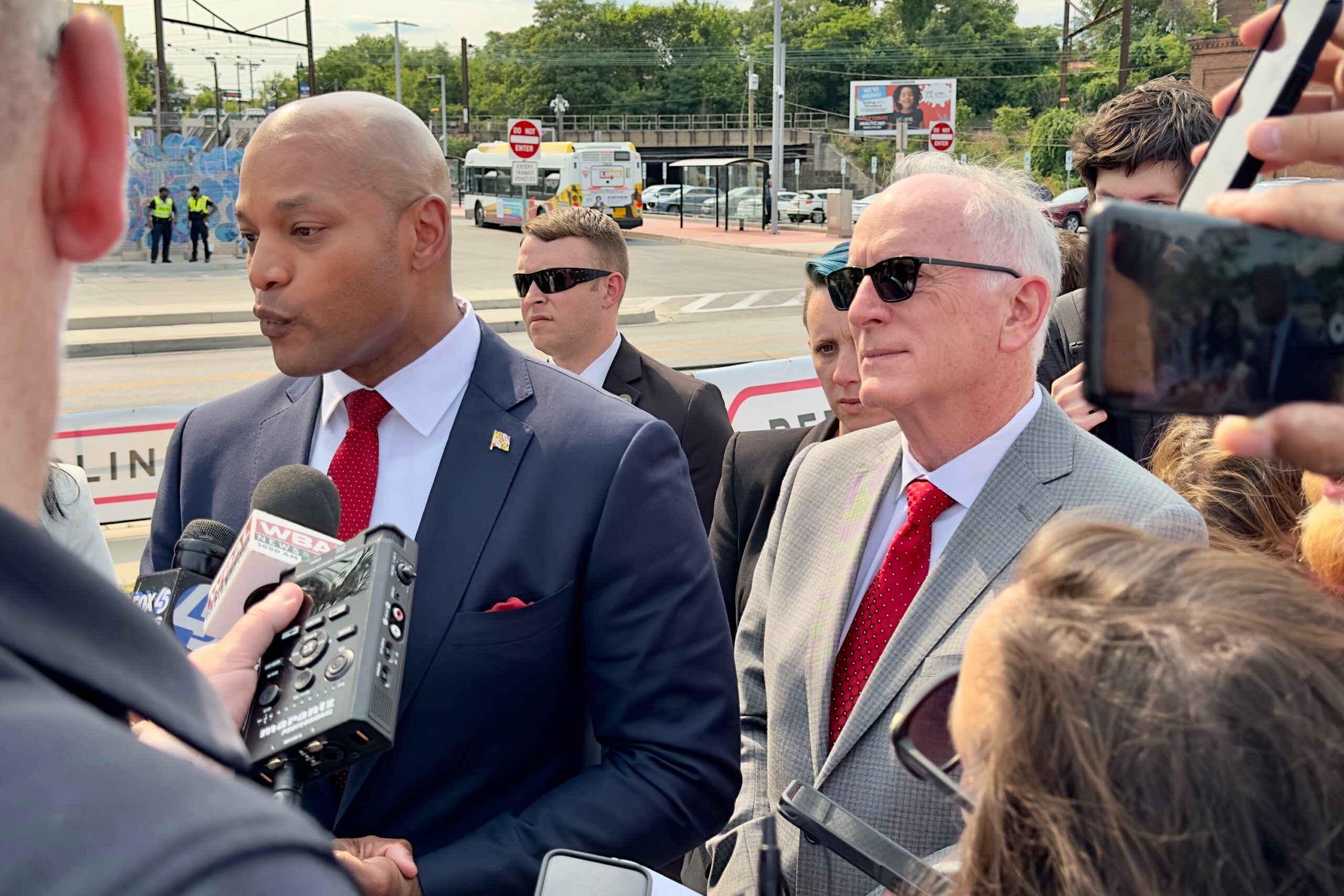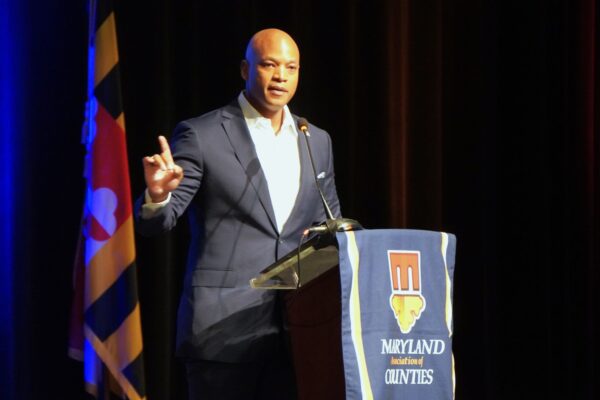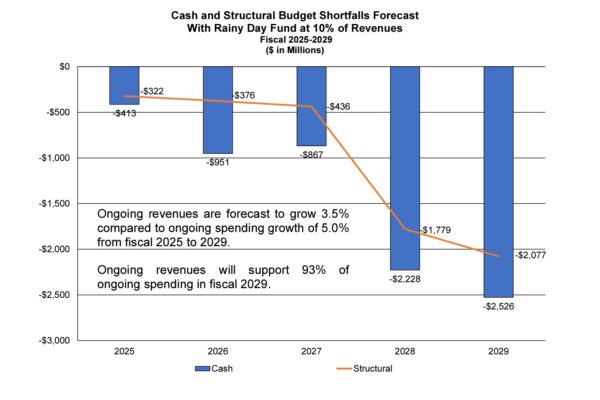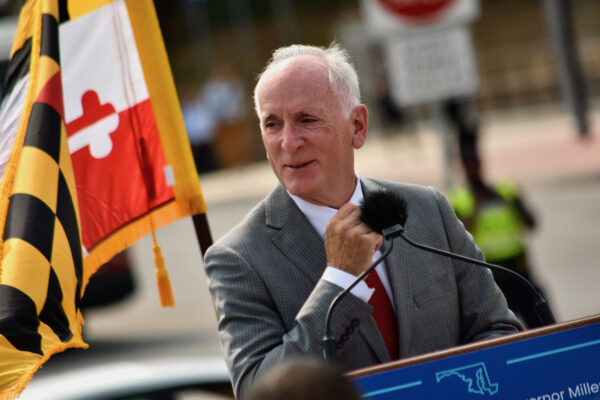
Maryland’s Department of Transportation is facing billions in cuts to address shortfalls that will squeeze operations and construction budgets.
State officials spent the better part of this week briefing lawmakers and local leaders on an 8% across-the-board cut to all the agencies within the Maryland Department of Transportation.
The Department of Transportation, in a statement responding to questions about the cuts and an expected public announcement next week, blamed the troubles on flagging revenues used to support road and transit projects.
“During a period when families are still feeling the effects of inflation, it’s incumbent on state government to take a balanced approach that tightens its belt while still making strategic investments in the future,” the department said in a statement. “The Moore-Miller Administration has been clear about the challenging budget shortfalls facing Maryland that have long been forecasted to take place. The depths of those structural problems only became clearer over time.
“Maintaining a sustainable, balanced budget requires a number of hard choices while still making key investments to grow Maryland’s economy, which is what the upcoming budget aims to accomplish.”
The briefings this week and a more public rollout next week come just as leaders of the state’s 24 major political subdivisions will gather in Cambridge for three days of policy briefings by the Maryland Association of Counties. The three-day conference, named “The Eye of the Storm” was already expected to include discussions of state budget concerns.

Gov. Wes Moore (D) discusses the guiding philosophies that his administration will lean on in order to improve a challenging economic landscape in Maryland on Aug. 19, 2023. Photo by Danielle J. Brown.
Gov. Wes Moore (D) is expected to speak to the group on Thursday.
In August, Moore warned of hard budget decisions on the horizon.
“As much as I want to say ‘yes,’ you’re going to hear some ‘no’s,’” he said during the association’s Ocean City convention.
Moore did not offer details on possible budget cuts, local project vetoes, or other options.
Just a month earlier, legislative budget analysts warned of looming budget deficits.
Members of the General Assembly’s Spending Affordability Committee were told last month that the state faces a structural gap of $322 million in the coming legislative session. The gap continues to grow in fiscal 2026 and 2027 to $376 million and $436 million respectively.
By fiscal 2028, the gap would grow to nearly $1.8 billion followed by a nearly $2.1 billion deficit the following year.
Driving much of the gap in those last two fiscal years are large increases in spending related to implementing the Blueprint for Maryland’s Future education reforms.

Legislative budget analysts warned lawmakers of a potential $2.1 billion structural deficit (gold line) by fiscal 2029. Graphic by the Department of Legislative Services.
Those gaps in the state’s budget and within the Department of Transportation may further hobble Moore’s promise to “rebuild state government” by filling vacant state jobs.
Moore in January vowed to hire 5,000 new employees before the legislature returned in 2024.
As of mid-September, the administration had hired fewer than 1,000, far short of the pace needed to fulfill his promise.
Maryland, as with other states, is struggling to find ways to pay for road and transit projects.
Currently those projects are paid for through the Transportation Trust Fund. The fund is a dedicated pot of money that in part comes from the state motor fuel and vehicle taxes.
The balance of the fund has failed to keep pace with transportation needs.
People are keeping their cars longer, resulting in less revenue from taxes on new car purchases. More fuel-efficient cars and increases in the number of electric and hybrid vehicles reduced the amount of motor fuel taxes collected.
Additionally, the money the state does collect is not going as far as inflation and other factors drive up the cost of projects.
A proposed six-year spending plan known as the Consolidated Transportation Plan, was presented to lawmakers out of balance. It is the first time that has happened in the history of the planning document.
“This was an issue that this administration inherited,” the transportation department said in its statement Friday night. “Maryland has known the current model for funding transportation in the state was unsustainable — coupled with years of flat revenue created the current problems with how the state funds transportation.”
Earlier this year, Transportation Secretary Paul Wiedefeld told a blue-ribbon commission tasked with modernizing how the state pays for roads and transit projects that there is a shortfall of $100 million in the first year.
That shortfall grows to $2.1 billion by the end of the current six-year proposal.
The fund is barely enough to keep pace with state-of-good-repair efforts and previously approved projects. Newer projects including the Red Line east-west project in Baltimore and widening of portions of the Capital Beltway, I-270 and replacement of the American Legion Bridge are not covered.
“The department is reviewing every dollar that it spends to ensure that funds are being invested in a way that meets our priorities,” Wiedefeld said in an email response when asked Thursday if the agency was planning to make any budgetary adjustments.
The initial failure to present a balanced spending plan has irritated lawmakers and local officials.

Maryland Transportation Secretary Paul Wiedefeld. Photo by Bryan P. Sears.
“MDOT is required to submit the final CTP to the legislature in mid-January, but we expect to provide additional information on what that final CTP will look like in the coming weeks,” Wiedefeld said in his email response.
Over the week, transportation officials met with leaders of the state’s eight largest jurisdictions and state and federal lawmakers to brief them on the coming announcement.
Multiple sources who were familiar with those briefings said the cuts included elimination or reductions in commuter bus service, possible elimination of as many as 10 MTA bus lines considered the least used; cuts to MARC service into West Virginia and a decision to forego a plan to expand train service along the Brunswick line.
Spokespeople for the department did not respond to specific questions about individual cuts nor did they elaborate on briefings given during the week.
“In spite of these strategic budget cuts, the state continues to protect the federal investments, approximately $7 billion in total, dedicated to transportation projects,” the department said in its statement. “The Moore-Miller Administration will continue to propose ideas that are in the best interest of the Maryland taxpayer.”




 Creative Commons Attribution
Creative Commons Attribution